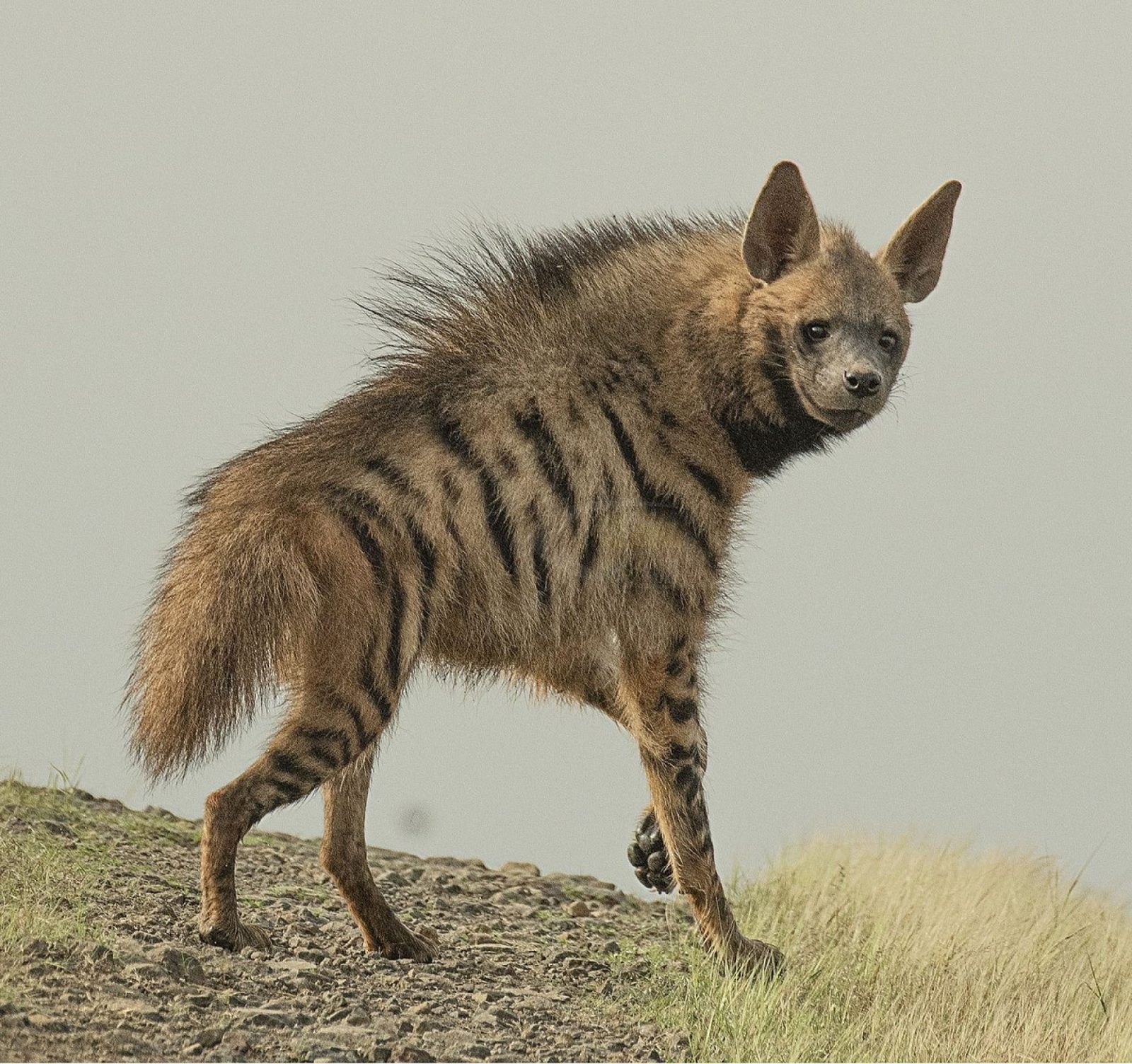
Striped Hyena
 Striped hyena are found across a far larger area than the brown Hyena. historically, its range would have stretched into Europe, but now the nearest place is Turkey.
Striped hyena are found across a far larger area than the brown Hyena. historically, its range would have stretched into Europe, but now the nearest place is Turkey.
There are no recognized subspecies, however there is some geographically variation in the animal. Hyenas in the Arabian peninsula have an accentuated blackish dorsal mane, while the colour of Arabian hyenas is grey to whitish grey, with dusky grey muzzles and buff yellow below the eyes. Hyenas in Israel have a dorsal crest which is mixed grey and black in colour, rather than being predominantly black. The largest striped hyenas come from the Middle East, Asia Minor, Central Asia, and the Indian subcontinent, while those of East Africa and the Arabian peninsula are smaller.
They are almost exclusively nocturnal, and monogamous, with the male establishing a den with the female and helping to raise the offspring. While they will dig their own burrows, they are happy to take over an abandoned one if it is going, They can be found establishing their lairs natural features such as caves, rock fissures, erosion channels as well as in burrows previously made and used by other animals such as porcupines, wolves, warthogs, and aardvarks. A hyena burrow often stands out from others, as they will leave bones from their food around the entrance. During the day striped hyena hides in caves, niches, pits, dense thickets, reeds, and plume grass to shelter from predators, heat, or winter cold. The complexity of their den varies from area to area; dens in the Karakum have entrances 0.67–0.72 m wide and are extended over a distance of 4.15–5 m, with no side tunnels or special chambers. In Israel the can be far more large, exceeding 27 m in length.
As with other hyenas, the striped hyena is a scavenger, and will eat from almost any carcass it finds, though when it encounters live prey that is the right size it will happily kill to eat as well. One on one, a striped hyena can dominate a wolf, though not a pack. They live in close proximity surprisingly happily, and will on occasion share a burrow. Striped hyena have also been known to travel with and hunt with a wolf pack, presumably because each have skills that benefit the other. Leopards cheetah and tiger cubs can all be pushed off kills by a striped hyena, though adult tigers are a different issue.
They are known for occasionally taking dogs, sheep and goats though accusations of predation of bigger livestock are probably more down to scavenging from a carcass. While usually timid of humans, there have been documented attacks on humans, normally on sleeping individuals that are outside – though scavenging from corpses is more common.
Though hunted by various groups, their fur is not nice, which means it is normally killed to stop its attacks and scavenging, not for the carcass itself. They have been tamed, and if raised with dogs, can form strong bonds with them.
Their conservation status is near threatened, with a population size estimated to be around 10,000, though given their range, this does not sound particularly high.
Any links we find will get added below the news section.